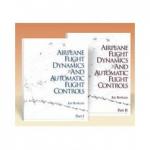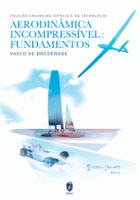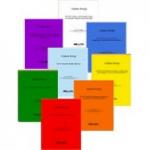Descrição
Airplane Flight Dynamics & Automatic Flight Controls, Part I, provides exhaustive coverage of the methods for analysis and synthesis of the steady state and perturbed state (open loop) stability and control of fixed wing aircraft. This widely used book has been updated with modern flying quality criteria and aerodynamic data. Throughout this text, the practical (design) applications of the theory are stressed with many examples and illustrations. Aircraft stability and control characteristics are all heavily regulated by civil as well as by military airworthiness authorities for safety reasons. The role of the these safety regulations in the application of the theory is therefore stressed throughout. Airplane Flight Dynamics & Automatic Flight Controls, Part I is an essential reference for all aeronautical engineers working in the area of stability and control, regardless of experience levels.
The book minimizes reader confusion through a systematic progression of fundamentals:
General steady and perturbed state equations of motion for a rigid airplane
Concepts and use of stability & control derivatives
Physical and mathematical explanations of stability & control derivatives
Solutions and applications of the steady state equations of motion from a viewpoint of airplane analysis and emphasis on airplane trim, take-off rotation and engine-out control
Open loop transfer functions
Analysis of fundamental dynamic modes: phugoid, short period, roll, spiral and dutch roll
Equivalent stability derivatives and the relation to automatic control of unstable airplanes
Flying qualities and the Cooper-Harper scale: civil and military regulations
Extensive numerical data on stability, control and hingemoment derivatives
Airplane Flight Dynamics & Automatic Flight Controls, Part II, provides exhaustive coverage of the methods for analysis and synthesis of automatic flight control systems using classical control theory. This widely used book has been updated with the latest software methods. Throughout this text, the practical (design) applications of the theory are stressed with many examples and illustrations. Aircraft stability and control characteristics are all heavily regulated by civil as well as by military airworthiness authorities for safety reasons. The role of the these safety regulations in the application of the theory is therefore stressed throughout. Airplane Flight Dynamics & Automatic Flight Controls, Part II, is an essential reference for all aeronautical engineers working in the area of stability and control, regardless of experience levels.
The book minimizes reader confusion through a systematic progression of fundamentals:
Elastic airplane stability and control coefficients and derivatives
Method for determining the equilibrium and manufacturing shape of an elastic airplane
Subsonic and supersonic numerical examples of aeroelasticity effects on stability & control derivatives
Bode and root-locus plots with open and closed loop airplane applications, and coverage of inverse applications
Stability augmentation systems: pitch dampers, yaw dampers and roll dampers
Synthesis concepts of automatic flight control modes: control-stick steering, auto-pilot hold, speed control, navigation and automatic landing
Digital control systems using classical control theory applications with Z-transforms
Applications of classical control theory
Human pilot transfer functions




